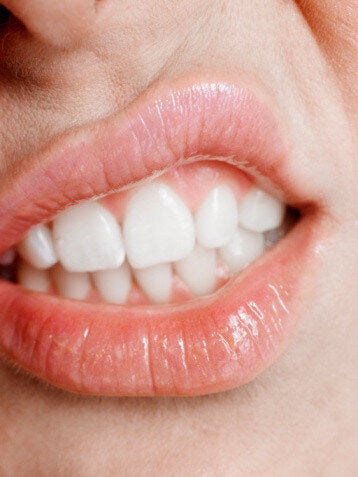
For some reason, May seems to have been the season for discussion of stinky cuisine. Maybe it's because certain smelly fruits and veggies ripen around that time. Perhaps it's due to the increasing popularity of exotic food journalism. Whatever the reason, the Internet is all but exploding with stories of bad breath-inducing fruits, cheeses, meats, beverages and...well, "miscellaneous delicacies" might be the best way to put it.
Here are some of the most widely discussed stinky foods. In each case, people tend to fall into two camps: the lovers who absolutely adore a malodorous meal or pungent potable, and the haters who wouldn't eat a disgusting dish for all the tea in China.
Speaking of tea, let's start with...
Kombucha. Of all the stinky drinks out there, this one may reign supreme. Kombucha is a form of tea that gets its special punch from yeast, which is allowed to ferment in the warm beverage for a month. What results, according to a piece in New York Magazine, is a drink that has long, green strands of gunk floating in it, and that smells like compost. Don't be fooled by wild health claims made by kombucha distributors. The Mayo Clinic emphasizes that there is no scientific evidence that kombucha helps liver function, immunity or anti-cancer activity. But there is evidence showing that this beverage can cause upset stomachs, infections and bad breath.
Tuna. Here's a classic from the Halitosis Hall of Fame. For many people, tuna fish is a delightful treat. For others, it is a rank-smelling oral odor factory. According to a study published in the Journal of Agricultural and Food Chemistry, the biggest molecular offenders in this fish are:
-- (E,E)-2,4-heptadienal, which smells stale and a bit like peanuts
-- (E,E)-2,4-decadienal, which is fatty or rancid-smelling
-- 3-(methylthio)propanal, which has an odor like baked potatoes or soy sauce, and
-- dimethyl trisulfide, which smells distinctly like cooked cabbage
Yuck. No wonder tuna breath usually requires a tooth brushing or a rinse with a specialty breath freshening mouthwash.
Peanuts. In the same journal, scientists broke down the scent of peanut breath. What they found is that multiple odor compounds in peanut paste can stain the palate and cause bad breath. These include:
-- Acetic acid, i.e. vinegar
-- Methanethiol, a molecule responsible for the smell of rotten cabbage, and
-- 3-isopropyl-2-methoxypyrazine, which is also the basis for the odor given off by the infamously stinky Asian lady beetles
Cheeses. Boy, are there some funky cheese out there. In fact, it almost seems like a commandment of cuisine that the stinkiest cheeses are some of the most sought-after. Consider Vieux Boulogne, recently crowned "the world's smelliest cheese" by a team of European researchers. This dairy-based delight out-stank a number of other offenders, including Epoisses de Bourgogne, a rank delicacy banned from all French public transit. Of course, there will always be other contenders for the dubious honor. There's Stinking Bishop, which is officially Britain's smelliest cheese -- with an aroma like a "rugby club changing room," according to the U.K. Guardian. And from Italy comes casu marzu, or "rotten cheese," a Sardinian sheep's-milk cheese whose secret ingredient is thousands of writhing maggots hidden beneath the rind. Not only is this one a real stinker, but it also leaves you wondering whether vegetarians could eat it in good conscience...
Durian. This exotic fruit is prized in Southeast Asia for its nutty, custardy taste. It's also reviled for its unbelievable odor. Durian is so off-the-charts smelly that in a side-by-side smell test, one unlucky volunteer found it harder to endure than a combination of rotten eggs, sweaty shoes and other foul unmentionables. Many connoisseurs say durian is worth the stench and counsel newbies to use specialty breath freshening mints or toothpastes to minimize the resulting halitosis.
Natto. This Japanese specialty consists of slimy, smelly, fermented soybeans served over rice. For breakfast. Not only does this goop cause bad breath, but it is reportedly stringier that an extra-cheesy pizza.
Surströmming. Want a Swedish treat? This one is made by pickling herring in brine for months on end. A Japanese study (fair warning: it's written in Japanese) claimed that surströmming is the most pungent halitosis-causing food on Earth.
Lutefisk. Here's another Scandinavian stinker, one that just might turn your stomach (and sour your breath). According to Fodor's, lutefisk is made by soaking cod in lye until it has a gel-like consistency and an eye-watering odor. If you like that, you might also enjoy...
Hakarl. As Iceland's contribution to the Pantheon of Pungency, hakarl does not disappoint. This fish dish is made by burying shark meat in gravel for months and letting it decay. What results is an ammonia-reeking glop that leaves even die-hard devotees holding their noses.
For more about the world's smelliest foods, check out this TheraBreath post and its companion piece.